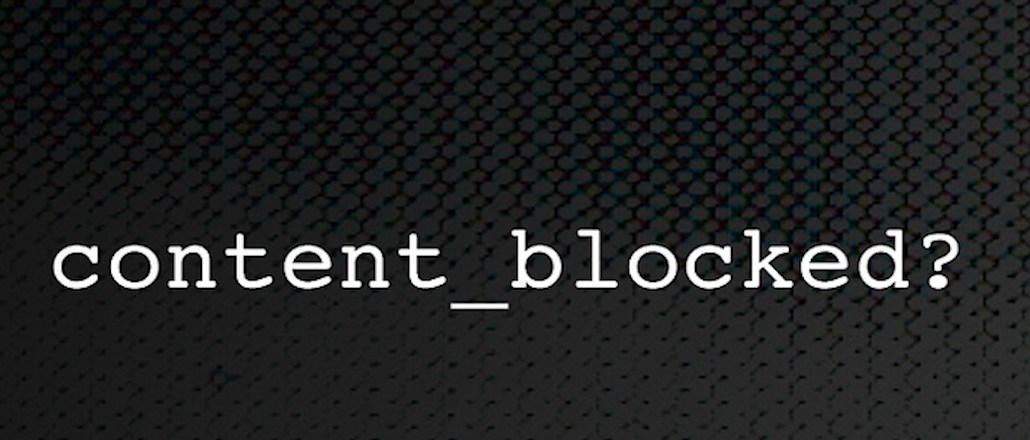Save 50% on a 3-month Digiday+ membership. Ends Dec 5.
Why site blacklists often fail in programmatic ad buying

Programmatic ad buying theoretically has plenty of tools available for marketers to prevent their ads from showing up in contexts that aren’t brand safe, whether that’s porn, gambling, fake news or hate content. The simple site blacklist should solve much of this problem.
But that’s not the case. Communication gaps exist between brand stewards and programmatic buyers. As with anything ad tech, there is also a degree of fraud. And although blacklists can block ads from appearing on any given site, agencies and performance marketing vendors aren’t always incentivized to use them since much of digital media buying is still premised on cheap reach.
“If you’re an agency who’s incentivized only on efficiency of delivery, this is the kind of site you’re tempted to keep on the plan, even when the effect is to fund hate speech,” said Michael Horn, managing director of data science at Huge. “It’s a position clients knowingly or unknowingly push their agencies into, and agencies don’t always have the time or will to push back.”
Typically, blacklists are implemented at the demand-side platform level. But websites can change domain names, so buyers must constantly audit their blacklists for accuracy, said Elliot Hirsch, CEO of ad tech startup AdYapper.
Entire categories of websites can be blacklisted by using vendors like Grapeshot and Sizmek, who can categorize content based off contextual filters and keywords. However, troublesome websites can still wiggle through the filters, so sources suggested that buyers still carry out site-by-site audits for sensitive categories. Another alternative is to use a whitelist, which restricts impressions so that ads only appear on websites on the list.
Charles Cantu, CEO and founder of ad tech company Huddled Masses, said that some marketers avoid using blacklists because they don’t want to limit inexpensive media buys that hit performance goals. But mixed incentives aren’t the main contributor to ads appearing on these sites. The most common reason brands’ ads show up near undesirable content is because of a lack of communication on the buying side, he said.
“If it’s done properly, you are not relying on a communication chain between [a programmatic buyer and] a brand safety person,” said John Montgomery, a GroupM executive who oversees brand safety. “But I’m sure there are some companies where the communication chain is not organized, and that’s how these things slip through.”
Ad position: web_incontent_pos1
Another problem is that programmatic buyers aren’t always trained in marketing, said Kepler Group CEO Rick Greenberg. Although buyers know how to operate platforms efficiently, they may be unfamiliar with the importance of concepts like brand safety and message fatigue. And if buyers aren’t immersed in the agency’s broader strategy, they may not understand how their work fits in.
“There is a definitely an issue in the broader agency community where there is a disconnect between programmatic and the people in charge of the brand’s message,” Greenberg said.
About 70 percent of the buyers who use the programmatic platform Adelphic have implemented a blacklist or whitelist, said Adelphic CEO Michael Collins. Although there is a cost to using additional brand safety tools, the fee is generally just a few cents per CPM, he said.
Collins suspected that some ads slip through the lists and onto fake news sites due to fraud and misrepresentation. Lower quality publishers have been known to bundle their inventory together under another name and push it onto exchanges where it is purchased by unsuspecting buyers, he said.
To reduce this particular type of fraud, sources suggested that buyers demand transparency reports from vendors, use private exchanges and bring their media buying and ad tech in house. And to make blacklists more effective in general, sources suggested that agencies place more effort on integrating their trading desks into their overall campaigns, that agencies train their programmatic people in marketing and that marketers put forth more realistic expectations that don’t incentivize buyers to move sites off blacklists to reach goals.
Ad position: web_incontent_pos2
Montgomery of GroupM also suggested that tech companies, agencies and publishers collaborate to create a central repository that lists fake news websites that advertisers may want to blacklist. He said, “There’s no point in keeping any of this proprietary.”
Image courtesy of Creative Commons
More in Marketing

Ulta, Best Buy and Adidas dominate AI holiday shopping mentions
The brands that are seeing the biggest boost from this shift in consumer behavior are some of the biggest retailers.

U.K. retailer Boots leads brand efforts to invest in ad creative’s data layer
For media dollars to make an impact, brands need ad creative that actually hits. More CMOs are investing in pre- and post-flight measurement.

‘AI is permeating everything we do’: How Guitar Center developed 2 AI tools this year
This summer, the company launched a chatbot called Rig Advisor to help customers find the right instruments and products.
Ad position: web_bfu







